nine awesome feminist horror flicks
Sick to death of horror movie clichés like the helpless girl who gets axed to death by a crazed lunatic? Here are some alternative horror films that are both feminist friendly and loads of fun. Keep that Halloween-feeling going all the way till Christmas.
Carrie (1976, dir. Brian De Palma)
Brian De Palma’s original Carrie remains one of the most haunting and terrifying films ever made. Based on Stephen King’s novel, it relies predominately on thrills and chills rather than blood and gore to strike fear into the audience. Carrie (Sissy Spacek) is a timid and abused 17-year-old girl with a crazy ultra-religious mother (an incredibly chilling Piper Laurie) and is made fun of by the popular kids at school. Once she discovers that she has telekinetic powers, Carrie ends up being in control of her life for once. Carrie is both sympathetic and terrifying all at once. That infamous scene at the prom is one of the most cruel and petrifying moments in film history. But it’s Carrie’s ending that will stay with you for weeks and weeks. Good luck sleeping tonight!
Pan’s Labyrinth (2006, dir. Guillermo Del Toro)
Perhaps pushing the notion of what constitutes a horror film, Pan’s Labyrinth never ceases to both shock and enchant me. Set during the Spanish civil war of the 1940s, it follows Ofelia (Ivana Baquero), the headstrong, young stepdaughter of a cruel army officer. With war raging on, Ofelia escapes to a fantasy world filled with fauns and fairies, where she is told she is a princess and must prove her royalty my completing three difficult tasks. The horror in Pan’s isn’t just in Ofelia’s fantasy world, but the sadism and cruelty of her real world. However, all the female characters in Pan’s are sympathetic and contrast the roles of women during this time; both Ofelia and her kickass housekeeper Mercedes (Maribel Verdú) are intelligent, brave and kind. The film is overall hauntingly beautiful and undeniably frightening.
The Descent (2005, dir. Neil Marshall)
It’s not often that a film features an all female cast and it’s even less common for a horror film, The Descent seems to push boundaries on every level. The film follows six friends as they embark on their yearly adventure trip of activities like skiing, hiking, and kayaking. This year, it’s caving. Just as they enter the cave it collapses around them and they have no way of getting out. But this is a horror movie and not 127 Hours: Female Edition, so of course they have far worse things to worry about than how to move those rocks. Genuinely terrifying, bloody, brutal and kickass, The Descent shows how awesome all-female horror movies can be. The women aren’t objectified and are shown as just regular people who can get a little crazy when put into a difficult – no, petrifying life or death – situation.
Rosemary’s Baby (1968, dir. Roman Polanski)
This film tends to get under your skin and stay there. Rosemary (Mia Farrow) and her husband, Guy (John Casavettes), move into a new apartment to start afresh and have a family. However, their friendly neighbours appear peculiar to Rosemary and she starts to experiencing strange events that could only be described as supernatural. When Rosemary does fall pregnant (but not to Guy!), the paranoia for her unborn child takes over her life when she suspects that her husband and neighbours have special plans for the child. For its time, Rosemary’s Baby was revolutionary; it’s a metaphor for the control men have over women’s bodies, even in a post-pill world. Rosemary is told how to live her life every second of the day, and her body becomes owned by someone else when she falls pregnant. Rather than being a by-the-books shocker, it eerily builds to a horrifying climax where Rosemary is faced with what has become of her baby.
Shaun of the Dead (2003, dir. Edgar Wright)
As perhaps the world’s first ever zombie rom-com, Shaun of the Dead was hugely influential in developing a new breed of horror movie that uses satire and wit rather than mindless clichés to gain thrills. But in saying that, Shaun is still a fantastic horror movie full of gore, guts and frights. It follows the eponymous Shaun (Simon Pegg) whose long-term girlfriend, Liz (Kate Ashfield) has just dumped him when the zombie apocalypse breaks out. Damn. The film works well as both an unconventional rom-com and alternative horror film, and still remains to be the funniest movie I have ever seen. It never disappoints to make me deliriously happy.
Sleepy Hollow (1999, dir. Tim Burton)
As part of my annual, traditional Halloween celebrations, I watch Tim Burton’s Sleepy Hollow. Burton is my all time favourite director and his quirky, gothic style is prevalent in Sleepy Hollow. The film is perhaps just as much a black comedy than it is a super creepy and gory horror film. Based on Washington Irving’s classic tale and set during the turn of the century, it follows timid and shy New York detective Ichabod Crane (Johnny Depp) who is sent to the small village of Sleepy Hollow to investigate a series of bizarre beheadings. The paranoid villagers claim that the murderer is the Headless Horseman, an evil demon who seeks revenge for his own beheading. Ichabod is the opposite of a stereotypical hero; he is scared, hopeless and naïve yet uses modern forensics to solve the crime. In saying that, his role in the story is to contrast gender roles in horror, and highlight that the roles of his love interest Katrina (Christina Ricci) and her evil stepmother Lady Von Tassel (Miranda Richardson) are actually the power-players in the film.
Ginger Snaps (2000, dir. John Fawcett)
In the middle of suburbia, sisters Ginger (scream queen Katherine Isabelle) and Brigitte (Emily Perkins) are obsessed with death and the occult. They despise general high school antics and regular kids their age. But their obsession turns deadly when, on the night of her first period, Ginger is bitten by a werewolf. In the days that follow, strange things start to happen to Ginger’s body and local dogs begin to mysteriously disappear. Emily struggles to find a cure for her beloved sister’s condition, but blood, guts and gore ensure. The werewolf metaphor in Ginger Snaps is of course symbolic of puberty and the female transformation in womanhood; Ginger dreads the thought of becoming adult and her transformation into werewolf form is subsequently brutal. Both her and Emily are three-dimensional characters who shy away from becoming typical “strong girl in slasher film” stereotypes.
Dawn of the Dead (2004, dir. Zack Snyder)
As one of the greatest zombie films of recent time, Dawn of the Dead depicts the impending zombie apocalypse as something all together terrifying and too realistic. Just like 28 Days Later, it approaches the situation with logic and fear mongering that makes the audience question what we would do in that situation. For instance, hypothetically, if a zombie apocalypse were to occur, where would the best place to hold up be? Why, a shopping mall of course! And that’s just what the heroes of Dawn of the Dead do. Lead by nurse Anna (Sarah Polley) and handyman Michael (Jake Weber) the group spend their final days in the mall, defending themselves from the living dead. Anna is clearly set up as the film’s protagonist from the start. Her regular day of going to work is interrupted when her husband transforms into a zombie on the morning of the apocalypse. Her seemingly idyllic world is turned upside down and she becomes a fighting machine in blood soaked pyjamas.
The Night of the Hunter (1955, dir. Charles Laughton)
This little-known noir gem is often considered one of the most underrated films of all time. Set in Depression era Middle America, family man Ben Harper kills two people during a botched robbery. Before he is captured, he convinces his young children, John and Pearl, to hide the $10,000 he stole. In jail, Ben meets preacher Harry Powell (a chilling Robert Mitchum), a con man and murderer who swindles lonely widows of their money before killing them. With Ben hanged, and himself released, Powell’s next target becomes Ben’s widow, Willa (Shelley Winters) and the $10,000. The film is like a nightmarish fairy tale, a Grimm Brother’s story full of gothic and malicious nuances. With “hate” tattooed on one hand and “love” one the other, Powell’s villainy and hatred for women (and children) is at the film’s core. Rather than glorifying and justifying Powell’s violence and twisted views towards women, Mitchum depicts him as a full-blown (albeit charming) psychopath. Silent screen icon, Lillian Gish, makes an appearance later on as an orphanage owner and John and Pearl’s saviour, Rachel Cooper. Her gutsy portrayal of a saint–like woman is captivating and way before its time. Perhaps viewed as a critique of attitudes towards women in a post-war society, The Night of the Hunter is an important film in history that was both revolutionary and influential to many directors.
Tell us what your favourite horror movie is in the comment section below!

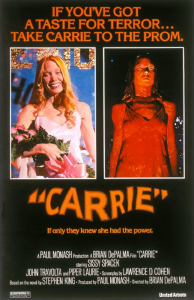
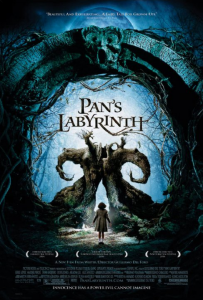
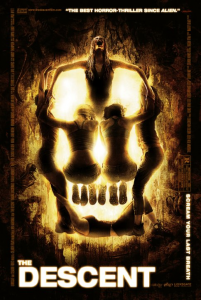
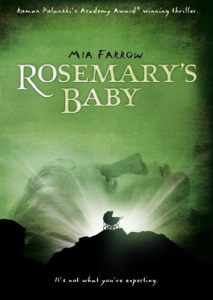
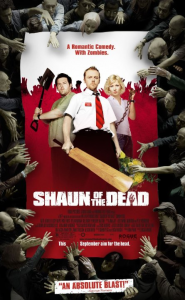
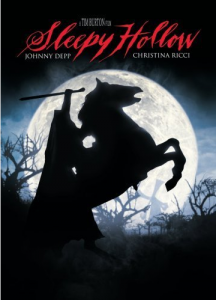
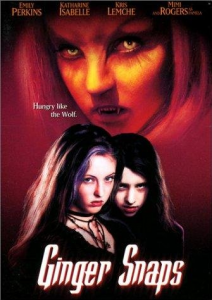
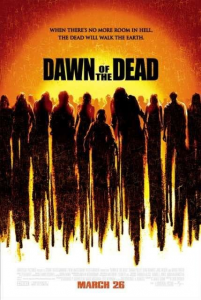
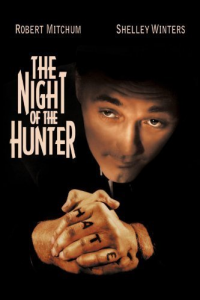

Pingback: Nine awesome feminist horror flicks for Halloween | Jade Bate